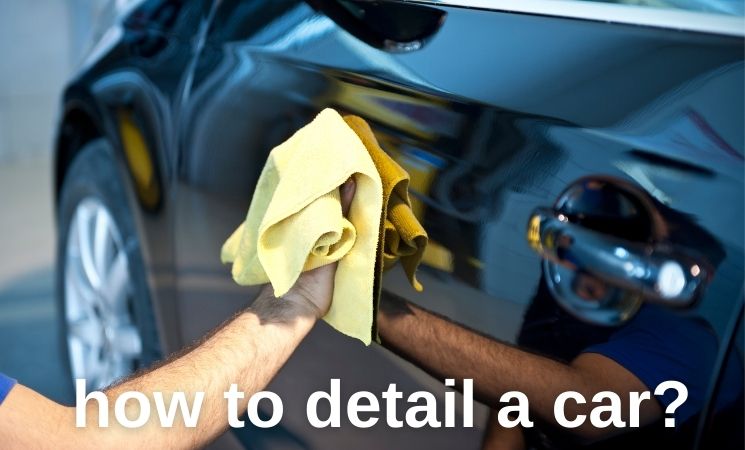Paint protection and preserving resale value starts with knowing exactly when to detail your car. The ideal detailing frequency varies based on your specific situation, but most vehicles need a full detail every 4-6 months to maintain optimal condition. For daily drivers, this schedule helps prevent swirl marks and protects against environmental impact on exterior surfaces.
Car detailing goes far beyond a basic wash, involving deep cleaning, paint correction, and protective treatments for both exterior and interior surfaces. Your car faces constant exposure to harmful elements – from UV rays to road salt – making regular professional attention essential for long-term preservation.
| Driving Conditions | Recommended Detailing Frequency |
|---|---|
| Daily Commuter | Every 4 months |
| Garage-Kept | Every 6 months |
| Coastal Areas | Every 3 months |
| Off-Road Use | After each adventure |
A proper detailing schedule helps maintain your vehicle’s appearance and structural integrity. Regular maintenance through contamination removal cycles and UV radiation protection strategies can significantly extend your car’s lifespan and maintain its market value. Think of detailing as preventive medicine for your vehicle – it’s always better to maintain than repair.

Understanding Car Detailing: Basics and Benefits
Let’s break down what makes car detailing different from your standard car wash. Paint protection involves specialized techniques that go beyond surface cleaning. If you’re investing in your vehicle’s appearance and longevity, understanding these fundamentals will help you make informed decisions about maintenance intervals.
What is Car Detailing?
Professional car detailing combines art and science to restore and protect your vehicle. The process includes meticulous paint correction to remove scratches and swirls, followed by protective treatments like ceramic coating or waxing. Interior detailing focuses on deep cleaning and conditioning of surfaces, from leather seats to carpets, while tackling those hard-to-reach spots that regular cleaning misses.
Here’s what sets detailing apart from regular washing:
| Service Type | Process Depth | Protection Level | Time Investment |
|---|---|---|---|
| Basic Wash | Surface cleaning | Minimal | 30 minutes |
| Full Detail | Deep restoration | Maximum | 4-8 hours |
Why Detailing Matters?
Your car’s exterior faces constant bombardment from environmental threats. Maintaining optimal paint protection through regular detailing:
- Prevents oxidation that can dull your paint’s finish
- Removes embedded contaminants that cause long-term damage
- Creates a protective barrier against UV rays and chemical exposure
The interior benefits are equally important. Interior conditioning schedule should align with your usage patterns to:
- Guard against premature aging of leather and vinyl
- Protect dashboard materials from cracking due to sun exposure
- Maintain a healthy cabin environment by removing allergens and bacteria
Regular detailing also makes financial sense. Preserving resale value through detailing isn’t just about aesthetics – it’s an investment that pays off when it’s time to sell or trade in your vehicle.
Factors Influencing Detailing Frequency
Your car’s ideal detailing schedule isn’t one-size-fits-all. Let’s examine the key factors that determine how often you should schedule those essential detailing sessions.
Environmental Impact
Living near the coast?
Your car fights a constant battle against salt air. Salt corrosion prevention techniques become crucial, often requiring more frequent detailing:
- Coastal vehicles need quarterly detailing minimum
- Monthly protective wax applications help resist salt damage
- Regular undercarriage cleaning prevents rust formation
Urban environments pose their own challenges. Contamination removal cycles need to address:
- Industrial fallout that bonds to paint
- Tree sap and bird droppings that can etch paint
- Brake dust accumulation on wheels
Usage Patterns
Your driving habits significantly impact your detailing maintenance intervals. Here’s how different use cases affect frequency:
| Usage Type | Recommended Frequency | Key Focus Areas |
|---|---|---|
| Daily Commuter | Every 4 months | Paint protection, interior wear |
| Weekend Car | Every 6 months | UV protection, dust removal |
| Off-Road Vehicle | After each adventure | Undercarriage cleaning, mud removal |
Vehicle Type and Condition
Different vehicles demand different care levels:
- Luxury cars require detailing every 3-4 months to maintain their premium finish
- Collector cars benefit from bi-monthly detailing even when garage-kept
- Vehicles with ceramic coating need specialized maintenance every 6-12 months
Personal Preferences and Budget
Balance your detailing goals with practical constraints:
- DIY enthusiasts can perform weekly maintenance to extend professional detailing intervals
- Professional services might focus on major treatments while you handle routine care
- Consider paint protection film or ceramic coating for longer-lasting results
Optimal Detailing Schedules
Let’s break down the ideal timing for different detailing services to keep your vehicle in top condition.
General Guidelines
A full detail every 4-6 months serves as the baseline for most vehicles. However, your specific schedule should align with your car’s needs:
| Vehicle Type | Recommended Frequency | Focus Areas |
|---|---|---|
| Daily Driver | Every 4 months | Paint protection, interior wear |
| Luxury Cars | Every 4-6 weeks | Premium finish maintenance |
| Weekend Cars | Every 6 months | UV protection, dust removal |
Specific Scenarios
Paint protection requires special attention:
- Ceramic coating maintenance needs inspection every 6-12 months
- Apply wax every three months for basic protection
- Schedule paint correction when swirl marks become visible
Interior care follows its own timeline:
- Leather conditioning every 3-4 months
- Vacuum and basic cleaning every 2 weeks
- Deep interior detailing with full exterior service
Seasonal Adjustments
Winter demands extra attention:
- Undercarriage cleaning after exposure to road salt
- More frequent exterior washes to prevent corrosion
- Additional protection before winter starts
Summer brings its own requirements:
- UV-protective treatments before peak sun exposure
- More frequent interior cleaning due to increased AC use
- Extra attention to contamination removal cycles
Customizing Your Detailing Schedule
Your car’s unique situation demands a tailored approach to detailing frequency. Let’s break down specific scenarios to help you create the perfect maintenance plan.
Daily Commuters: Heavy commuter vehicles need extra attention with a bi-monthly detailing schedule. Urban environments expose your car to:
- Higher levels of pollution
- Increased brake dust
- More frequent bird droppings
Extreme Weather Conditions: Weather plays a crucial role in determining detailing frequency:
- Coastal areas require detailing every 6-8 weeks to prevent salt corrosion
- Winter regions need additional undercarriage cleaning for salt removal
- Hot climates demand quarterly detailing to prevent UV damage
Coastal Vehicles: Living near the coast requires special attention:
- Schedule detailing every 2-3 months minimum
- Apply protective coatings more frequently
- Focus on undercarriage protection
Mileage-Based Schedules:
Consider these general guidelines:
| Mileage | Recommended Service |
| Daily Use | Every 3-4 months |
| Weekend Cars | Every 6 months |
| Show Cars | Every 2-3 months |
Professional vs DIY Detailing
Making the right choice between professional services and DIY detailing can impact both your car’s condition and your wallet. Let’s examine the key differences to help you decide.
When to Choose Professional Services:
Professional detailers bring specialized expertise and equipment that’s hard to match at home. They excel at:
- Complex paint correction procedures
- Ceramic coating applications
- Engine bay detailing
- Deep interior restoration
The professional advantage comes from their training and access to industrial-grade equipment. While it costs more upfront, professional detailing often delivers:
- Flawless results
- Time savings
- Access to premium products
- Expert damage assessment
DIY Maintenance Tips:
For regular maintenance between professional services, you can perform these tasks:
- Weekly exterior washing with proper car soap
- Regular vacuuming and interior wipe-downs
- Basic wheel cleaning
- Clay bar treatments every few months
A balanced approach often works best – handling basic maintenance yourself while leaving complex procedures to professionals. This strategy helps maintain your car’s condition while managing costs effectively.
Myths and Misconceptions About Car Detailing
Let’s clear up some common misunderstandings about car detailing that might affect your maintenance decisions.
Myth: Monthly Waxing Weakens Clear Coat
This is false. Professional-grade waxes and sealants actually protect your clear coat from environmental damage. If applied correctly, these products create a sacrificial barrier that preserves your paint’s integrity.
Myth: Over-detailing Damages Paint
Professional detailing won’t harm your vehicle when done correctly. Modern detailing products and techniques are specifically designed to be gentle yet effective. Reputable detailers use specially formulated products that protect while they clean.
Myth: Detailing Is Just an Expensive Car Wash
Detailing goes far beyond basic washing. It includes paint correction, protective coatings, and deep interior restoration. While a car wash focuses on surface cleaning, detailing involves comprehensive restoration and protection of your vehicle’s surfaces.
Myth: Detailing Is Only for Luxury Cars
Every vehicle benefits from regular detailing, regardless of its make or model. Regular maintenance through detailing helps preserve resale value and prevent costly repairs for all types of vehicles.
FAQs on Car Detailing Frequency
Let’s address the most common questions about detailing schedules with clear, actionable answers.
Luxury vehicles need detailing every 3-4 months to maintain their premium finish. If you’re driving frequently in urban areas, consider increasing the frequency to protect against environmental contaminants.
No, professional detailing won’t damage your paint when done correctly. However, aggressive paint correction should only be performed when necessary, as it removes a thin layer of clear coat.
Vehicles with ceramic coating need washing every 2-4 weeks. Plan for maintenance detailing every 6-12 months, with ceramic coating boosters applied every 3-4 months for optimal protection.
Maintaining Your Vehicle’s Longevity
The question of how often to detail car ultimately comes down to your specific situation. By following a consistent detailing schedule based on your environment, usage patterns, and vehicle type, you’ll maximize your car’s longevity and maintain its value.
Remember these key takeaways:
- Most vehicles need professional detailing every 4-6 months
- Coastal or high-pollution areas require more frequent attention
- Regular maintenance between details helps extend protection
- Professional services for complex tasks, DIY for routine care
Think of detailing as an investment rather than an expense. Regular maintenance through proper detailing maintenance intervals helps prevent costly repairs and preserves your vehicle’s resale value. Start your personalized detailing schedule today, and you’ll see the difference in your car’s appearance and condition for years to come.




